|
accommodation
aggradation
boundaries
clinoform surface
falling stage systems tract
forced regression
highstand systems tract
lowstand systems tract
maximum flooding surface (mfs)
onlap
parasequence
sequence
sequence boundary
stacking patterns
regression
regressive systems tract
retrogradation
transgressive-regressive sequence
transgressive surface
transgressive systems tract
type 1 sequence boundary
type 2 sequence boundary

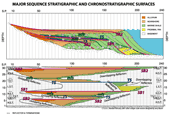
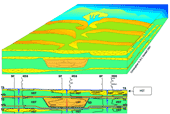


|
Genetically associated stratigraphic units that were deposited during specific phases of the relative sea-level cycle (Posamentier, et al, 1988). These units are represented in the rock record as three-dimensional facies assemblages. They are defined on the basis of boundaries, position within a sequence, and parasequence stacking pattern (Van Wagoner et al., 1988). At least five are recognized for this web site but, historically, other systems tracts have been defined, and some of these are explained within the text below.
Five of these systems tracts are:
Falling stage systems tract (FSST) - includes all the regressional deposits that accumulated after the onset of a relative sea-level fall and before the start of the next relative sea-level rise. The falling stage systems tract is the product of a forced regression (one should not confused this with the sediments deposited during a normal regression). The FSST lies directly on the sequence boundary and is capped by the overlying lowstand systems tract sediments (see animated gif below & the Quicktime Movie to the left). A variety of parasequence stacking patterns can be produced including: downward stepping prograding clinoforms, stranded parasequences, and mass flow deposits in distal areas. Each of these parasequence stacking patterns depend on the depositional profile, the rate of sediment supply, and the rate of relative sea-level fall. The FSST was first fully defined by Plint and Nummedal, (2000). This systems tract has also been termed the early lowstand systems tract (ELST) (Posamentier and Allen, 1999). The fall is evidenced by the erosion of the subaerially exposed sediment surface updip and the formation of a diachronous sequence boundary that caps the highstand systems tract (HST). On seismic data, the upper boundary is the first definable horizon that onlaps the FSST, but when well logs and outcrops are used this boundary is instead recognized as the first marine-flooding surface that overlies the FSST. Coincidentally it is often marked by a time high stand ravinement surface overlain by a sediment lag. 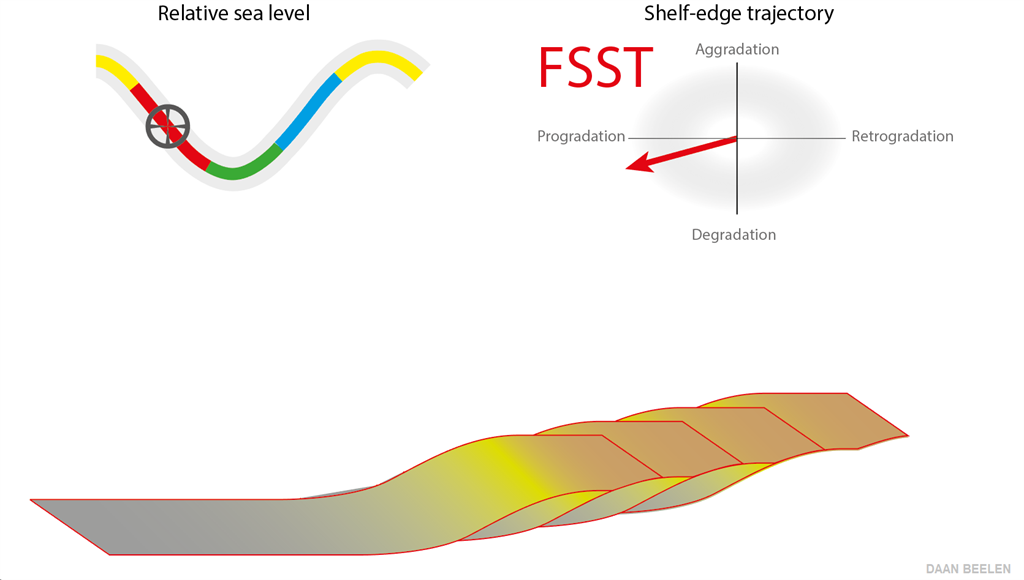
Earlier papers that defined systems tracts, including Vail (1987) and Posamentier and Vail(1988), placed part of the FSST within the lowstand systems tract (LST). The sediments of this former LST definition included the deposits that accumulated just after the maximum rate of relative sea-level fall. and were divided into three separate depositional units - basin-floor fan, slope fan, and lowstand wedge, all of which overlie a so-called type 1 sequence boundary.
Lowstand systems tract (LST) - includes deposits that accumulate after the onset of relative a sea-level rise. This systems tract lies directly on the upper surface of the falling stage systems tract and is capped by the transgressive surface formed when the sediments onlap onto the shelf margin. Stacking patterns exhibit [backstepping, onlapping, retrogradational, aggrading clinoforms that thicken updip]. Lowstand systems tract sediments often fill or partially infill incised valleys that were cut into the highstand systems tract, and other earlier deposits, during the FSST. This systems tract has also been termed the late lowstand systems tract (Posamentier and Allen, 1999). 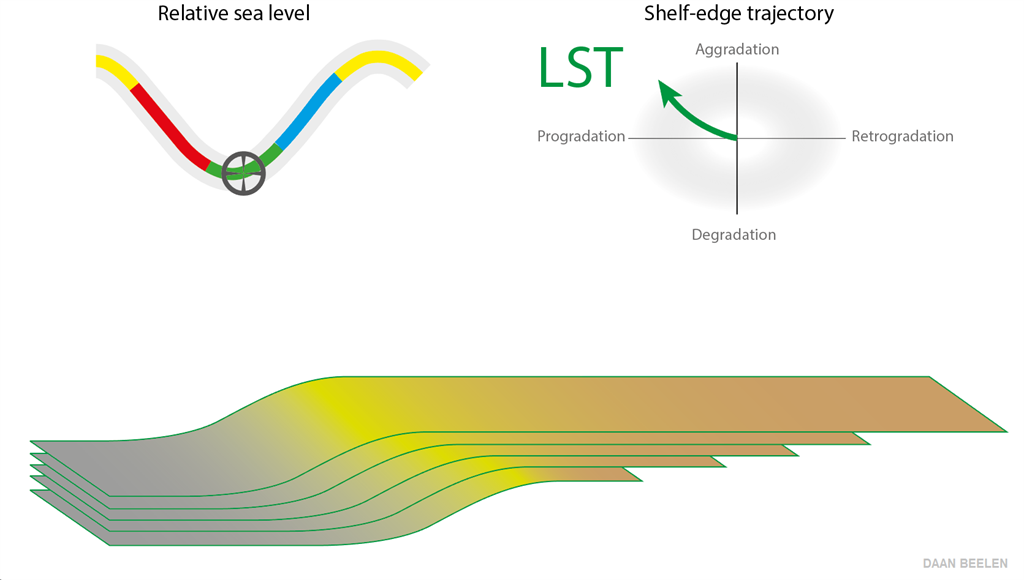 Transgressive systems tract (TST) - comprises the deposits that accumulated from the onset of coastal transgression until the time of maximum transgression of the coast, just prior to the renewed regression of the HST. The TST lies directly on the transgressive surface (TS) formed when the sediments onlap the underlying LST and is overlain by the maximum flooding surface (mfs) formed when marine sediments reach their most landward position. Stacking patterns exhibit backstepping onlapping retrogradational clinoforms that thicken landward. In cases where there is a high sediment supply the parasequences may be aggradational.
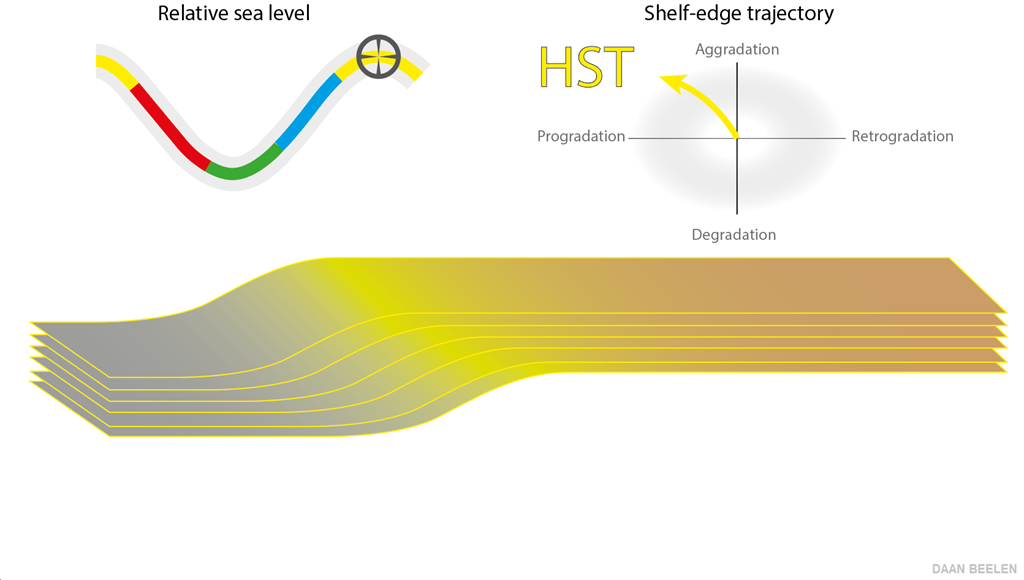
Regressive System Tract
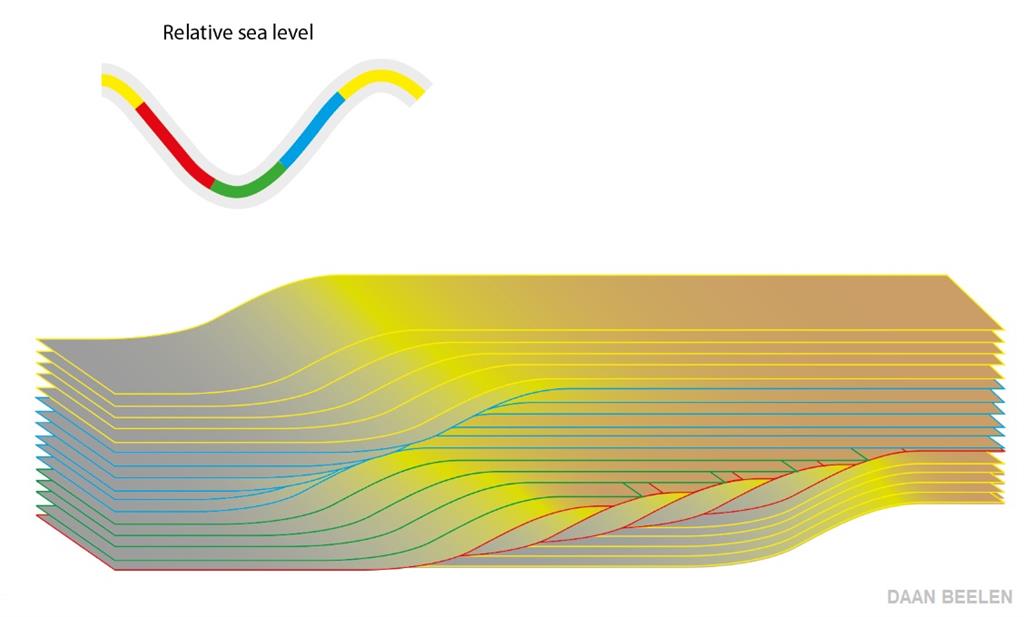
References
Embry, A.F., Johannessen, E.P., 1992, T–R sequence stratigraphy, facies analysis and reservoir distribution in the uppermost Triassic- Lower Jurassic succession, western Sverdrup Basin, Arctic Canada. In: Vorren, T.O., Bergsager, E., Dahl-Stamnes, O.A., Holter, E., Johansen, B., Lie, E., Lund, T.B. (Eds.), Arctic Geology and Petroleum Potential, vol. 2 (Special Publication). Norwegian Petroleum Society (NPF), pp. 121–146.
Plint, A.G., Nummedal, D., 2000, The falling stage systems tract: recognition and importance in sequence stratigraphic analysis. In: Hunt, D., Gawthorpe, R.L. (Eds.), Sedimentary Response to forced regression, vol. 172. Geol. Soc. London Speci. Publ, pp. 1–17.
Posamentier, H.W., Allen, G.P., 1999, Siliciclastic sequence stratigraphy: concepts and applications. SEPM Concepts in Sedimentology and Paleontology no. 7, 210 p
Posamentier, H.W., Jervey, M.T., Vail, P.R., 1988, eustatic controls on clastic deposition. I. Conceptual framework. In: Wilgus, C.K., Hastings, B.S., Kendall, C.G.St.C., Posamentier, H.W., Ross, C.A., Van Wagoner, J.C. (Eds.), Sea Level Changes––An Integrated Approach, vol. 42. SEPM Special Publication, pp. 110– 124.
Posamentier, H.W., Vail, P.R., 1988, eustatic controls on clastic deposition. II. Sequence and systems tract models. In: Wilgus, C.K., Hastings, B.S., Kendall, C.G.St.C., Posamentier, H.W., Ross, C.A., Van Wagoner, J.C. (Eds.), Sea Level Changes––An Integrated Approach, vol. 42. SEPM Special Publication, pp. 125– 154.
Vail, P.R., 1987, Seismic stratigraphy interpretation procedure. In: Bally, A.W. (Ed.), Atlas of Seismic Stratigraphy, vol. 27. American Association of Petroleum Geologists Studies in Geology, pp. 1–10.
Van Wagoner, J.C., Posamentier, H.W., Mitchum, R.M., Vail, P.R., Sarg, J.F., Loutit, T.S., Hardenbol, J., 1988, An overview of sequence stratigraphy and key definitions. In: Wilgus, C.K., Hastings, B.S., Kendall, C.G.St.C., Posamentier, H.W., Ross, C.A., Van Wagoner, J.C. (Eds.), Sea Level Changes––An Integrated Approach, vol. 42. SEPM Special Publication, pp. 39–45.
Van Wagoner, J.C., Mitchum Jr., R.M., Campion, K.M., Rahmanian, V.D., 1990, Siliciclastic sequence stratigraphy in well logs, core, and outcrops: concepts for high-resolution correlation of time and facies. American Association of Petroleum Geologists Methods in Exploration Series 7, 55 pp.
|